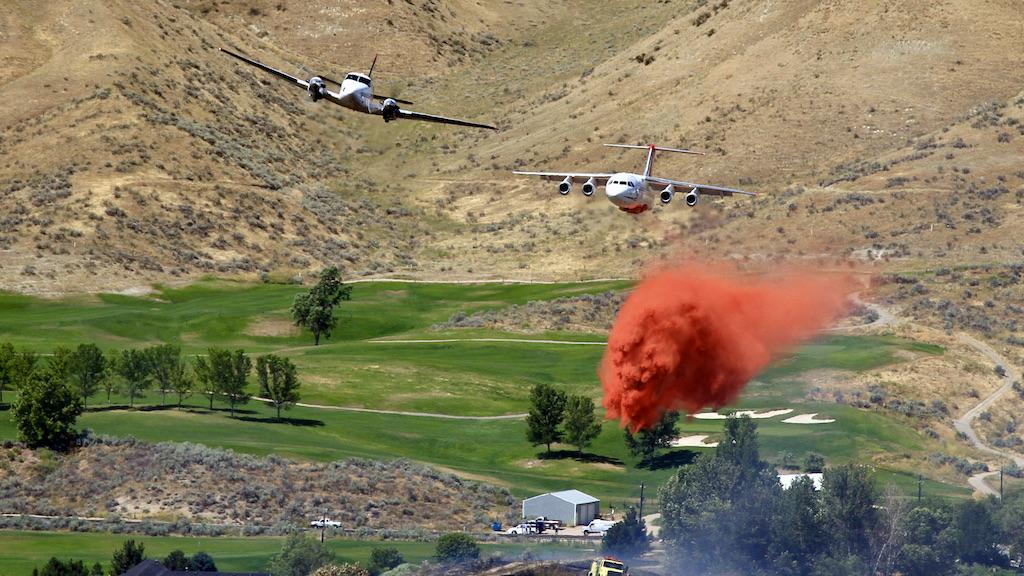
Aerial firefighting missions include prolonged low-speed maneuvering at very low altitudes in mountainous terrain where visibility is restricted and air currents are unstable.
If you watch some of your favorite sports stars, you will notice that one trait that distinguishes them from others is their ability to think ahead and quickly anticipate. They know to make a break for the opposite basket while the ball is still being rebounded, because they can see an opening for a fast break.
The ability to project ahead in time is vital to accurate situational awareness. Their previous exposure, experience and proficiency certainly contribute to their SA. This often overlooked component of SA involves the ability to predict how the current situation will evolve and will impact future operations.
The Avianca Boeing 707 that crashed after a missed approach to New York JFK on Jan. 25, 1990, is a tragic example. While much of the attention on the accident focused on the flight crew’s failure to properly declare a fuel emergency, key components in the chain of events started early in the flight. The aircraft, enroute from Medellin, Columbia, to JFK, entered a first of three holding patterns over Norfolk, Virginia, that lasted 19 min. The flight then proceeded up the eastern coastline near Atlantic City, New Jersey, when it was placed in a second holding pattern for 29 min. The aircraft had originally been dispatched with 4,800 lb. of extra fuel for holding, but this 48 min, of holding burned through that amount.
The flight was then cleared to descend to 14,000 ft. and was held again at the CAMRN holding pattern. It was during this hold that the New York Air Route Traffic Control Center advised flight 052 that there was an indefinite hold and to continue holding at CAMRN. At this point, the first officer advised ATC that they didn’t have enough fuel to proceed to the alternate airport. The flight had to abort the first landing attempt and ran out of fuel while accepting vectors for a second landing attempt.
The NTSB investigation found no indications that the flight crew considered how these holding patterns would impact the future of the flight. The weather data provided to the flight crew was 9-10 hours old. The alternate airport on the flight plan, Boston Logan, was forecast to be below approach minimums but the flight crew failed to show adequate awareness. There was no evidence that the pilots ever requested weather information en route, nor did they express any concern to ATC about their fuel situation during the first two holding patterns. The result is that the flight crew burned through its reserve fuel to the point where it could no longer divert to Boston.
The aircraft crashed into a hillside on the north shore of Long Island. Eight of nine crew and 65 of 149 passengers were killed.
Solutions Need to Be Multi-Layered
This BCA author did an in-depth examination of vortex ring state accidents as background research and was humbled to read how high-time pilots were caught by surprise by this phenomenon. The pilots didn’t have the SA to understand how close their helicopter was to the margin of a vortex ring state, and unfortunately this typically occurs close to the ground with little margin for recovery. (Note: A Feb. 21, 2023, article on vortex ring state discussed recent revelations from Claude Vuichard on a helicopter’s airflow information provided by the trim string. This advanced warning can be invaluable, especially when the helicopter is operating close to the ground.)
Clearly telling pilots to “know what is going on around you” is woefully insufficient. As the preceding examples illustrate, enhancing pilot SA takes multiple layers, from the design of procedures that focus pilot workload and attention during critical phases of flight; cockpit instruments that help a pilot to better assemble a more accurate mental understanding of the weather; nearby traffic; aircraft systems and aircraft state; the transmission of important information to pilots in a timely manner, to an understanding of how cockpit ergonomics and working conditions should be designed to enhance pilot SA.
Factors That Affect Pilots’ Situational Awareness, Part 1:
https://aviationweek.com/business-aviation/safety-ops-regulation/factor…
Factors That Affect Pilots’ Situational Awareness, Part 2: https://aviationweek.com/business-aviation/safety-ops-regulation/factor…





